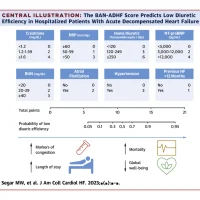A recent study reports that individuals with heart failure who increased their daily step count experienced notable improvements in their health status during a 12-week period.
Consumer wearable devices to track health status and progress have become increasingly popular. However, interpreting data from these devices, including step count, can sometimes be unclear, and there is a lack of guidance on utilising this information. Patient-reported outcomes for heart failure, approved by the FDA to report symptoms, function, and quality of life for regulatory approval, currently do not encompass data from wearable devices.
The study aimed to establish the correlation between activity measurement, specifically daily step count and floors climbed, with patient outcomes in individuals with heart failure. The researchers analysed data from the CHIEF-HF trial that provided participants with a Fitbit to monitor their activity and used smartphone applications to complete serial Kansas City Cardiomyopathy Questionnaires (KCCQ).
The study included 425 patients with heart failure. Their daily step count and floors climbed were assessed in four domains: physical limitation, symptom frequency, quality of life, and social limitation. Higher KCCQ scores indicate better health, and changes of five or more points are considered clinically significant in heart failure outcomes.
Results indicated an increased daily step count was associated with higher KCCQ scores for physical limitation and total symptom scores. Participants with lower KCCQ-total symptom scores walked around 2,473 steps per day, while those with higher scores averaged 5,351 steps per day. There was no significant difference in daily floors climbed across different KCCQ score ranges.
As per the findings of the study, a daily step count between 1,000 and 5,000 was significantly linked to symptoms and physical limitations. However, the association became less pronounced when step counts surpassed 5,000 steps per day. Compared to those who walked 2,000 steps per day, individuals who walked 1,000 steps had KCCQ-total symptom scores of 3.11 points lower, while those who walked 3,000 steps had scores of 2.89 points higher.
Changes in step count over time were significantly related to changes in KCCQ scores, suggesting that step count data from wearable devices could be valuable in clinical care and future clinical trial endpoints. Participants whose step counts increased by 2,000 steps per day experienced a 5.2-point increase in KCCQ-total symptom scores and a 5.33-point increase in KCCQ-physical limitation scores compared to those with no change in step count. However, a decline in step count did not lead to statistically significant reductions in KCCQ-physical limitation scores compared to participants with no change in step count.
Overall, study findings highlight the importance of monitoring changes in daily step count for patients with heart failure, as it can indicate health status improvement. However, seeing a decrease in step count may not necessarily indicate the opposite and may not require immediate intervention but rather follow-up with the patient.
Source: American College of Cardiology
Image Credit: iStock










